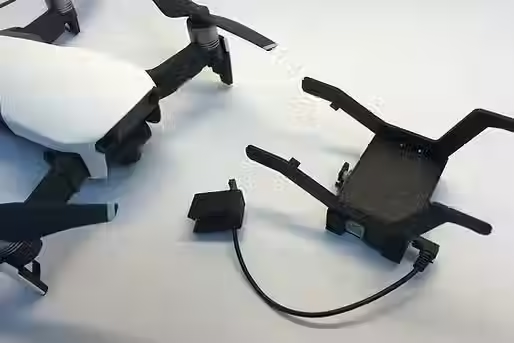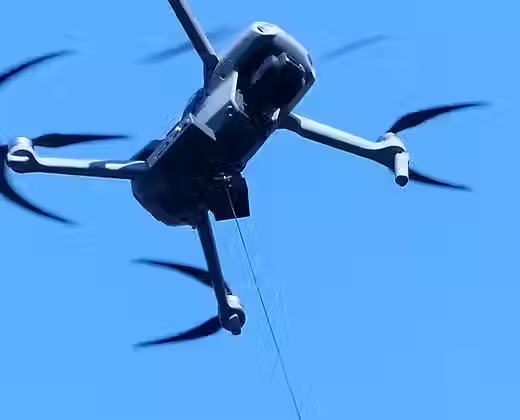Top 5 Costly Drone Payload Mistakes and How to Avoid Them
- Drone Sky Hook
- Jul 8
- 4 min read
At 300 feet above the ground, in the middle of a high-stakes delivery test, a payload release failed, again. Not because the drone malfunctioned, and not due to faulty software. The culprit? Tiny drone payload mistakes because of overlooked detail in the drop mechanism setup.

As drone missions grow more critical, from search and rescue drops in national forests to NGO-led supply deliveries in remote disaster zones, the smallest payload-related error can have oversized consequences. Whether you're operating a DJI Matrice or a compact Mavic Air 2, payload handling is no longer a secondary concern. It's a precision task requiring discipline, situational awareness, and the right gear.
In this article, we dive into the top drone payload mistakes drone pilots keep repeating, and how to eliminate them with practical, field-tested wisdom.
1. Overloading the Payload Beyond Safe Limits
Let’s start with the obvious, but often ignored. Each drone model has a recommended maximum takeoff weight (MTOW), and yet, it’s shocking how frequently operators push past it.
A common misconception: “It’s just 200 grams more. The drone can handle it.”
Yes, your drone might take off, but you’re shortening the life of motors, compromising battery efficiency, and increasing crash risk. In search and rescue scenarios, this could delay mission-critical deliveries.

Payload release devices like the Release & Drop Plus for DJI Mavic 2 are built lightweight, but once you add in the payload and packaging, even the slimmest margin matters. Always calculate total weight after mounting the release mechanism, not before.
Avoid this drone payload mistake by:
Verifying total flight weight with a digital scale.
Running a 60-second hover test before the mission.
Factoring in altitude and temperature, which can affect lift capacity.
2. Misaligned Center of Gravity
Many drone payload mistakes stem not from what is carried but how it’s carried. If your drone tilts oddly or drifts off-course, the issue might be balance, not wind.
When payloads are attached off-center, especially with custom or DIY rigs, it causes inconsistent motor load. That translates into erratic flight paths, reduced flight time, and poor drop accuracy.
Mounts like the Drop Release for DJI Phantom 4 are designed to keep the payload centered beneath the fuselage. But when users attach oddly shaped packages or over-length carabiners, it throws off the geometry.
Avoid this drone payload mistake by:
Keeping payloads symmetrical and tightly packed.
Using release hooks aligned directly with the drone’s center axis.
Avoiding rope or cord lengths that swing during motion.
3. Using Incompatible or DIY Drop Devices
One of the fastest ways to create drone payload mistakes is improvising your drop setup. Some pilots attempt to tape hooks, magnets, or servo arms onto drones without understanding airflow, vibration, or electronic interference.
The drone payload mistake such as improvising setups increase the risk of mid-air failure. The servo might trigger early, or worse, never at all. For missions involving first aid kits, food, or communications equipment, that’s not a margin for error you can afford.
Smart alternatives include Bluetooth-triggered devices, like the Drone Sky Hook Dual Drop Plus for DJI Air 2S. These systems have built-in fail-safe triggers and minimal interference with drone sensors.
Avoid this drone payload mistake by:
Using payload systems purpose-built for your drone model.
Testing the release mechanism at least 5 times before field use.
Avoiding third-party firmware modifications unless absolutely necessary.
4. Forgetting to Factor in Wind Drag and Aerodynamics
Many pilots assume that if the payload is light, it won’t affect aerodynamics. In reality, shape and surface area matter just as much as weight.
Even a lightweight drop, like a compact medical supply pouch, can destabilize flight if it's flat, boxy, or positioned too low. Wind drag can also cause the drone to “yaw” or drift sideways, resulting in inaccurate drop locations.

Release systems offered by Drone Sky Hook are streamlined for minimal drag. But even the best systems need properly packaged payloads to work as expected.
Avoid this drone payload mistake by:
Packaging payloads into aerodynamic shapes (oval or cylinder-shaped preferred).
Keeping the payload hook point centered.
Flying practice runs in similar wind conditions prior to deployment.
5. Failing to Conduct Drop Accuracy Tests
You wouldn’t fly a mapping mission without calibrating your drone. So why fly a payload mission without testing drop accuracy?
This is one of the most preventable drone payload mistakes, yet it’s skipped all the time, especially in time-sensitive missions. Operators assume the GPS point is enough. It’s not.
Even with high-end GPS, drop drift can vary by 1–2 meters depending on altitude, wind, and payload swing. That’s enough to miss a small clearing or drop into water instead of land.
Avoid this drone payload mistake by:
Practicing with weighted dummy payloads in similar terrain.
Using visual spotters and the drone camera to track landing points.
Running simulated missions with varying drop altitudes.
Bonus: Skipping Post-Mission Checks
Many drone payload mistakes aren’t discovered until the next mission. Bent hooks, misaligned arms, servo fatigue, these don’t always show up mid-flight. If your drone has performed several drops without inspection, the failure rate rises with each trip.
Take two minutes after every mission to:
Inspect Drop Hook movement and mounting brackets.
Clean off dust or debris that may jam the release hook.
Repair or replace bent or cracked parts if needed.
Final Thoughts: The Payload Is Part of the Aircraft
In modern aerial missions, payloads aren’t just accessories, they're integral to your platform. Every gram added, every cable routed, every hook mounted changes the way your drone behaves. Mastering payload discipline is part of becoming a professional pilot, whether you're mapping disaster zones, delivering aid, or conducting reconnaissance.
Products like the Dual Release and Drop, Release and Drop Plus, and the various bundles, help reduce the margin for error, but only if pilots treat the payload setup with the same seriousness as flight planning.
By avoiding these top five drone payload mistakes, you increase the success rate of your missions, preserve your equipment, and build operational trust, whether in the eyes of your clients, your team, or the people you serve.





.png)
Comments